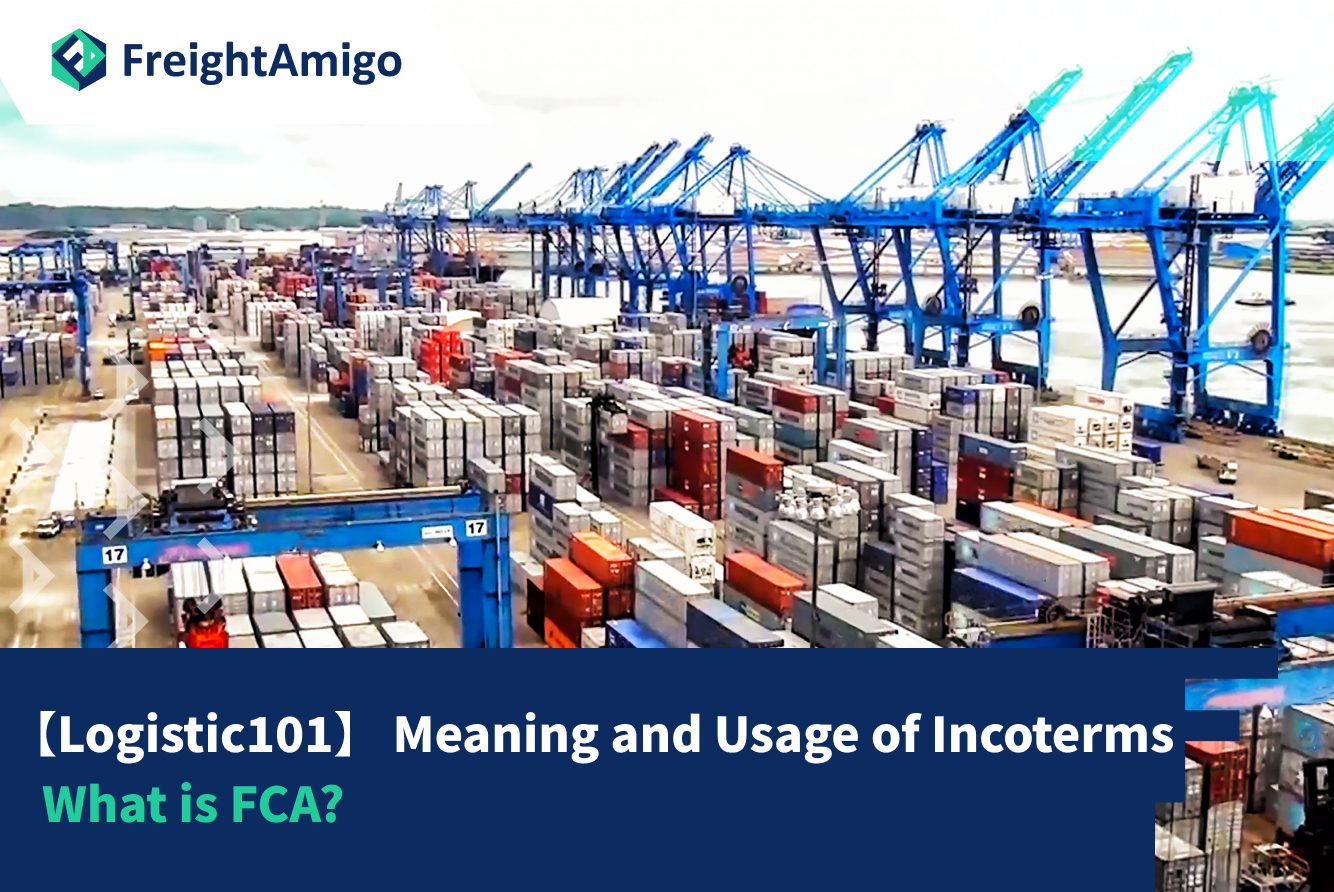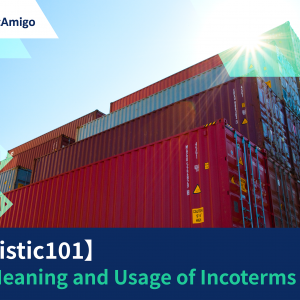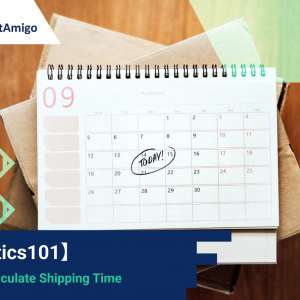Author Name: Tiffany Lee – Marketing Analyst at FreightAmigo
In international trade, due to different trade customs of various countries, misunderstandings, disputes, and lawsuits often arise. In order to avoid these problems, the International Chamber of Commerce (ICC) published a set of international rules for interpreting trade terms in 1936, called Incoterms. FCA is one of the international trade terms and FreightAmigo will explain its meaning and usage to you!
Looking to compare international express delivery, air freight, sea freight, railway freight, and truck logistics management solutions in real-time to control transportation costs?
What is FCA?
FCA (free carrier) refers to the seller’s responsibility to deliver the goods to the carrier at the agreed-upon location designated by the buyer, once the seller has completed export clearance procedures. This term can be used for various modes of transportation, including multimodal transportation. “Carrier” refers to any person who commits to performing transportation by rail, road, air, sea, inland waterway, or a combination thereof, in a transportation contract.
Seller’s responsibilities:
- Provide goods that comply with the contract.
- Provide commercial invoice or an equivalent electronic message that complies with the sales contract, as well as any other certificates required by the contract to prove that the goods comply with the contract.
- Bear the risks and costs of the goods until they are delivered to the carrier, obtain any export licenses or other official permits, and handle all customs procedures required for the export of goods when necessary.
- Deliver the goods to the carrier or other designated person identified by the buyer at the agreed-upon place or any other place of delivery specified in the contract, by the agreed-upon delivery date or within the agreed-upon period, in the manner agreed-upon or customary at the designated place of delivery.
- Bear all risks of loss or damage to the goods until they are delivered.
Buyer’s responsibilities:
- Arrange transportation and provide the seller with full notice of the carrier’s name, transport mode, delivery time, and place.
- Assume all risks of loss or damage to the goods from the moment the seller delivers the goods.
- Receive the delivery documents or equivalent electronic information as specified in the contract, and pay the purchase price as specified in the contract.
- If the buyer wishes, the buyer may also bear the risks and costs, obtain any import licenses or other official permits, and handle all customs procedures required for the import and transit of goods from other countries when necessary.
Difference between FCA and FOB:
- FOB is applicable to sea transportation, while FCA is applicable to any mode of transportation.
- FOB delivers goods at the loading port, while FCA delivers goods at the first carrier.
- FOB risk transfers at the time of loading onto the ship, while FCA risk transfers at the time of delivery to the first carrier.
- FOB uses a bill of lading, while FCA uses a different transport document.
- FOB requires a trade term that is subject to variation to resolve the burden of loading and unloading costs when chartering a ship, while FCA does not.
Things to note when using FCA transportation:
Risk transfer issues
FCA is different from other trade terms such as FOB, where the transfer of risk is not based on the ship’s rail, but on the delivery to the first carrier. This is not only the case for modes of transportation other than sea transportation, but even in sea transportation, the seller is considered to have completed delivery and transferred the risk when the goods are delivered to the ocean carrier. However, FCA terms require the buyer to arrange transportation and notify the seller of the carrier’s name and related matters in a timely manner for the seller to complete the delivery task as agreed. However, if the seller is unable to complete the delivery on time due to the buyer’s responsibility, as long as the goods have been transferred to the buyer, the time of risk transfer can be advanced.
Delivery conditions for different modes of transportation:
- Inland transportation: If delivery is made at the seller’s location, the seller must hand over the goods to the buyer’s designated ship, which constitutes completion of delivery. If delivery is made at the carrier’s location, the seller must hand over the goods to the inland transportation carrier or its agent, which constitutes completion of delivery.
- Ocean transportation: If it is full container load (FCL), the seller hands over the container to the ocean carrier. If it is less than container load (LCL) or non-containerized cargo, the seller delivers the goods to the shipping point, hands them over to the ocean carrier or its agent, which constitutes completion of delivery.
- Railway transportation: When the goods are enough to fill a whole train car or container, the seller is responsible for loading or packing and handing over to the railway department, which constitutes completion of delivery. If the goods are not enough to fill a whole train car or container, the seller delivers the goods to the railway receiving point or onto the vehicle provided by the railway, which constitutes completion of delivery.
- Road transportation: If delivery is made at the seller’s location, the seller must hand over the goods to the buyer’s designated vehicle. If delivery is made at the carrier’s location, the seller must hand over the goods to the road carrier or its agent, which constitutes completion of delivery.
- Air transportation: The seller hands over the goods to the air carrier or its agent, which constitutes completion of delivery.
- When the transportation mode is not specified, the seller hands over the goods to the carrier or its agent, which constitutes completion of delivery.
- Multimodal transportation: When the seller delivers the goods to the first carrier in accordance with the provisions of (1)-(6) depending on the specific circumstances, it constitutes completion of delivery.
Clear division of responsibility and cost issues:
FCA applies to various modes of transportation, including multimodal transportation. The seller’s place of delivery varies depending on the transportation mode used. Regardless of where delivery is made, according to the “Incoterms”, the seller must bear the risk and cost, obtain export licenses or other official documents, and handle all customs procedures required for the export of goods. Under the FCA terms, the cost and risk division assumed by the seller and buyer is the same and is based on the delivery to the carrier. The seller is responsible for all costs incurred before handing over the goods to the carrier, and the buyer is responsible for all costs incurred after handing over the goods to the carrier. However, if the buyer entrusts the seller to handle certain matters within the scope of the contract (such as arranging transportation contracts), the costs incurred and additional costs caused by the buyer’s negligence should be borne by the buyer.
FreightAmigo puts the safety of your cargo first, ensuring that your treasures arrive safely at the shipping point. Trust your logistics expert!
If you have any inquiries on logistics/supply chain, feel free to contact FreightAmigo now:
Chat with us online OR
Phone / WhatsApp: +852 281216868121686









































